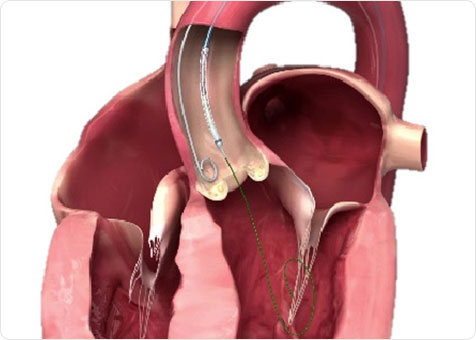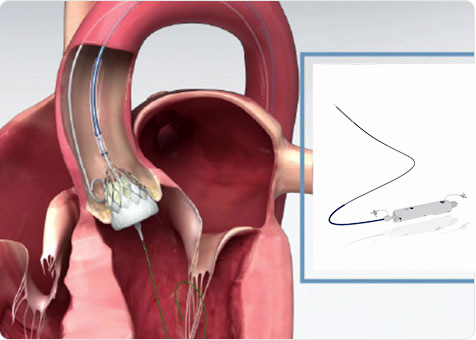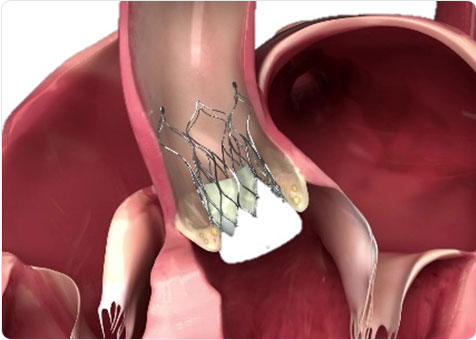The average thickness of the aortic valve is only 0.3 mm. Yet the aortic valve will be opened and closed nearly 2 billion times in a person's lifetime, consequently aortic valve is likely to deteriorate. Additionally, bacterial infection, aging and various other factors could also threaten the health of aortic valve, resulting in valve stenosis.
When aortic valve stenosis occurs, the valve becomes hard, inflexible, and cannot be fully opened and closed, the natural pumping mechanism of blood is affected, resulting in insufficient blood output. The heart also has to increase its power just to pump out the same amount of blood. Over time, this long-term "overworked" state will permanently damage the heart muscle, causing heart failure. Heart failure could seriously affect patient’s daily activities, even lead to death.
Mean thickness of the aortic valve
Opening and closing times of the aortic valve

During TAVI, the bioprosthetic valve is fully folded into the catheter, which then passes through the aorta into the heart.
Common approaches for TAVI are transapical , transfemoral artery, transsubclavian artery, and transascending aorta.
Through the imaging and delivery system, the physician delivers the catheter to the diseased valve, then gradually release the valve through the automatic handle after positioning. Figure 2 shows the valve in release. When the valve is completely released, the biological valve fully unfolds in the diseased valve, and replaces the function of the original valve in the patient's body.

The valve is folded and placed in the catheter. The catheter and the folded valve passes through the artery to the diseased aortic valve.

The physician release the valve from the catheter and push the diseased area of the aortic valve aside. To ensure accurate positioning and placement of the new valve, The physician will use special X-ray equipment.

Once installed in place, the new valve will immediately start to work and restore healthy blood flow. After the test confirms that the new valve is functioning properly, the physician will remove the catheter, close the incision, and transfer the patient to the rehabilitation area.
©Copyright 1998-2023, MicroPort CardioFlow Medtech Corporation. All rights reserved. | 网站备案/许可证号:沪ICP备2023023560号  沪公网安备 31011502014876号
沪公网安备 31011502014876号
互联网药品信息服务资格证书编号:(沪)-非经营性 - 2024 - 0135
“MicroPort CardioFlow”及“  are registered trademarks of MicroPort CardioFlow Medtech Corporation.
are registered trademarks of MicroPort CardioFlow Medtech Corporation.